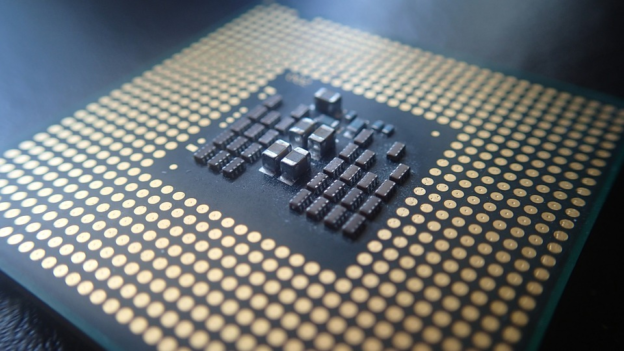Qualcomm is set to take over the PC industry with the world’s first 48-core 10nm processor, the Centriq 2400. This processor aims to deliver improved performance with a lower power usage and is aimed for use in the newest smartphones. The processor will be released in the second half of 2017 and will rival tech giant, Intel.
In December 2016, Qualcomm announced its plan of creating its first 10nm server processor called the Centriq 2400. This second-generation Qualcomm server is the first of its type in the family of 10nm Fin Field-Effect Transistor processors.
This latest offering from Qualcomm is built using a Qualcomm Falkor CPU and is aimed at the PC and datacenter industry. The Centriq 2400 comes with approximately 48 custom Qualcomm ARMv8-compliant Falkor cores.
Competition for Intel
Qualcomm’s latest offering will give Intel plenty of competition due to the smaller processor size of 10nm as compared to Intel’s 14nm. The only rival that Intel has, in terms of core count, at the moment is its 14nm E7 Broadwell processor, which stands at 24 cores, which is half the number of cores offered by Qualcomm.
Qualcomm has announced that the Falkor will be SBSA compliant, which will allow it to be compatible with any software that is running on an ARMv8-compliant server platform. Qualcomm Centriq also happens to be the world’s first 10-nanometer server processor, giving it a marked advantage from its rivals.
Changes in Data center Landscape
In recent years, there has been a shift in the way that servers are purchased, largely due to cloud computing. Cloud computing continues to march ahead of traditional enterprise IT and most companies are happy to adopt this form of data storage.
According to the IDC, approximately 50% of IT spend will be on cloud-based technology by 2020. The move towards a cloud-based data model has also led to the creation of a shift in the supply chain. Large datacenters are now sourcing their server platforms directly from the original design manufacturer (ODM).
Most datacenter software is created on open source software platforms, which allows Qualcomm, along with other ARM ecosystem partners, to work with open source projects and support projects within the ARMv8 architecture. Several types of hardware use ARMv8 architecture, including Arduino boards, which also make use of headers that are typically manufactured by a female header manufacturer. Arduino boards can also make use of a pin header connector for the shields used to manufacture these boards.
Mobiles are increasingly replacing PCs around the world and this is being reflected in the pace of the manufacturing process in datacenter software. With PC volumes steadily declining over the last few years, the volume of mobiles has crossed the 1-billion-units-per-year mark. The rapid rate at which mobile phones are being produced has led to an increased pace of newer process nodes being created.
Qualcomm Aims to Push Boundaries
In March 2017, Qualcomm announced plans to collaborate with Microsoft in a bid to help create improved next-generation cloud services for its latest product. The collaboration has future implications for both tech giants because it guarantees future collaborations not only on cloud services, but also for hardware, software and other system related aspects. In fact, Qualcomm has submitted its server specifications for the Centriq 2400 and these show that the latest offering is based on the latest version of Microsoft’s Project Olympus.
Qualcomm and Microsoft have been working on ARM-based servers for several years now and these have helped to improve a version of Windows Server as well. This collaboration has helped Microsoft’s internal data centers and has also been used on the Centriq 2400 by Qualcomm.
The collaboration between the two has been seen as a means to facilitate the adoption of ARM into the data center. Apart from operating systems and firmware, this also includes areas such as software and hardware. Electronics manufacturers might see a change in consumer demands for various products in the future, depending on how the public adopts newer technology.
This newest product by Qualcomm features a custom-made Falkor CPU, which has been created with the aim to take on high workloads. When Qualcomm unveiled Snapdragon 835 SoC, the first processor from the brand which was similar to Samsung’s 10nm product, the end result was aimed at the mobile market. This ARM processor was appealing for several reasons, including lower power usage and lower costs, both of which are valuable characteristics in a product in a data center environment. Even a few watts less used per chip translates into to a saving of millions on a larger scale.
Although Qualcomm has been yet to reveal all facets of this latest product, it has said that the 10nm processor allows it to increase area efficiency by 30%. It also revealed that the 10nm processor translates to 40% less power consumption when compared a 14nm processor.
Competitors
Qualcomm won’t be releasing this product until the second half of 2017, and when it does, it is going to see some stiff competition. Intel is set to release the 10nm Cannonlake chips by the end of 2017 and its 10nm Xeon chips will be released in 2018.
Conclusion
Qualcomm’s latest offering is going to bring new competition to the PC industry and will no doubt have ramifications on the mobile market as well. Although it will bring plenty of competition for Intel, several new products are going to be introduced to the market in 2017, and only time will tell which will be the most successful among the users.
Author Bio:
Rachel Oliver is a freelancer who has a way with words. She likes to write about anything and everything under the sun, but themes like technology, electronics & gadgets, sports, construction and maintenance interests her more.

